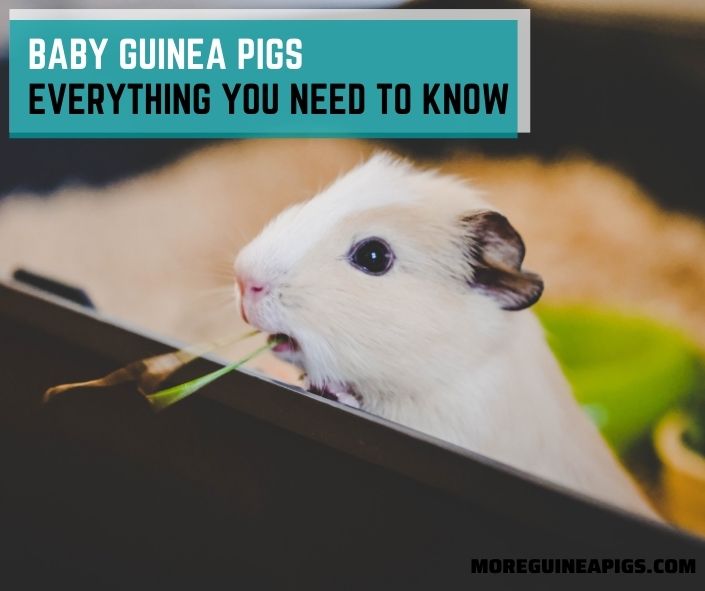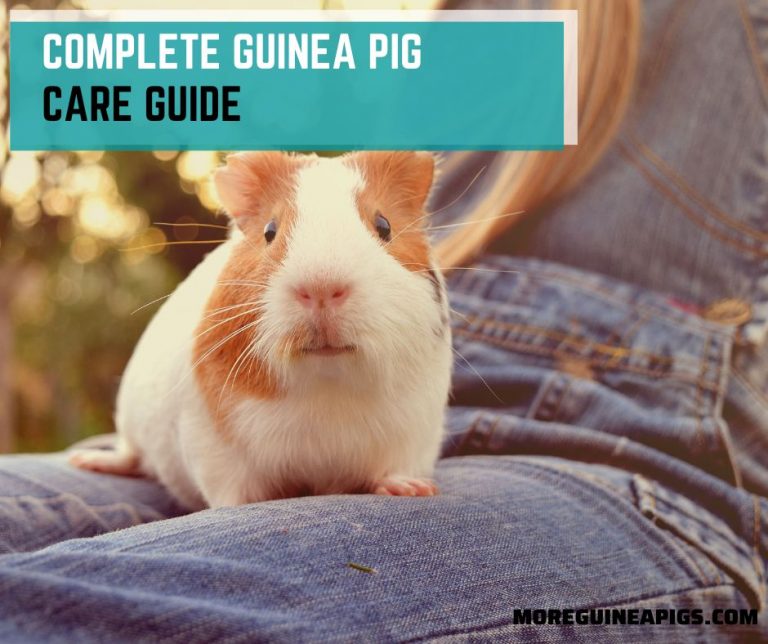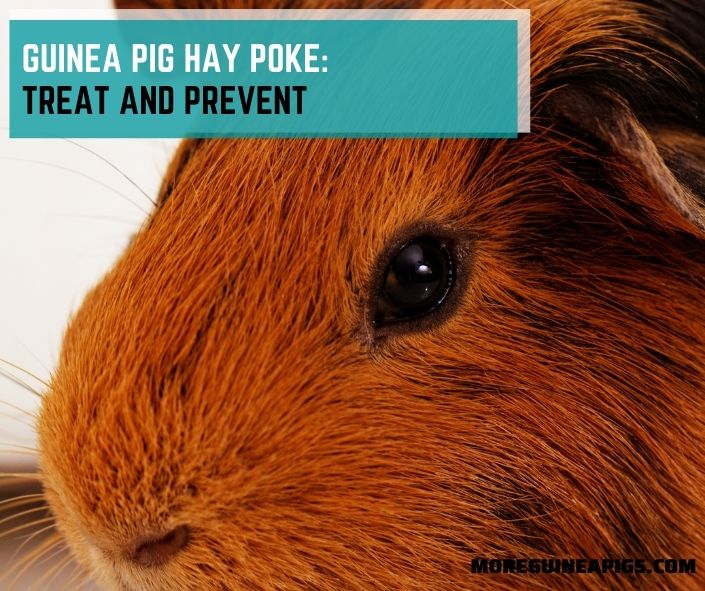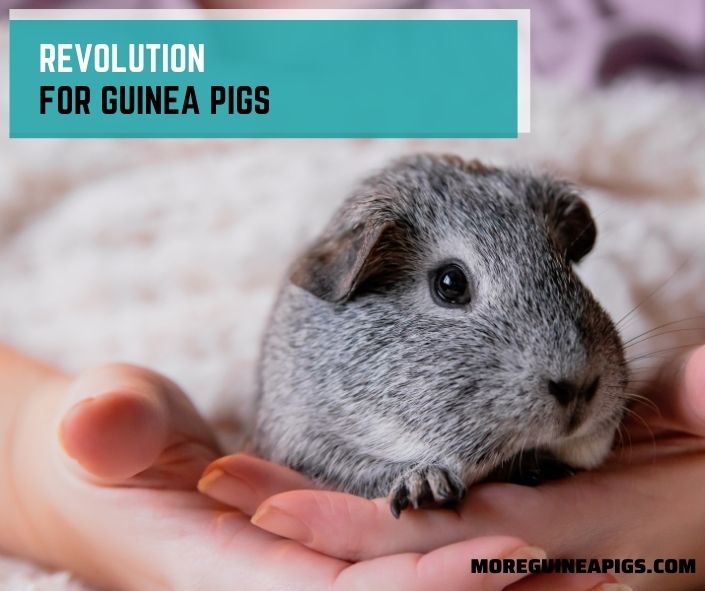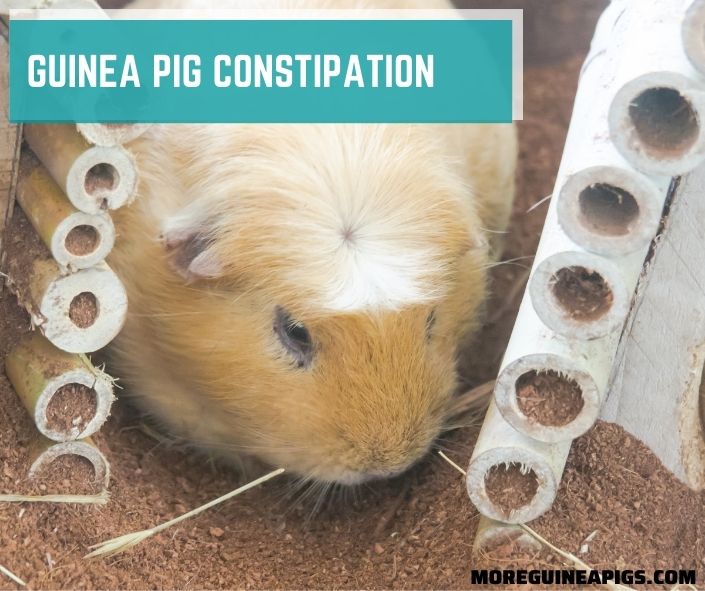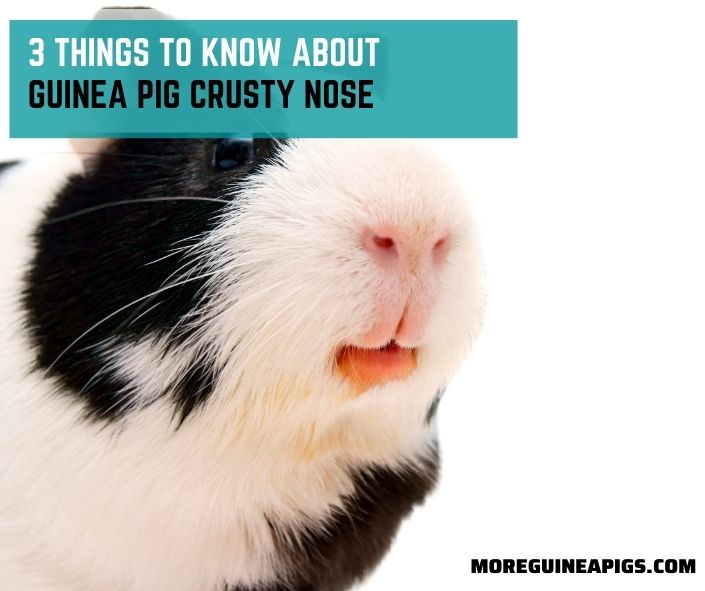Baby Guinea Pigs: Everything You Need to Know
Guinea pigs are getting more popular as a pet, especially for families due to their magnificent temperaments.
They have incredible personalities, are social, and rarely bite even when stressed. Due to their easy-care level, you may be wondering about getting a baby guinea pig as a pet.
Before you get a baby guinea pig from your local pet store or breed your guinea pig, you need to know how to care for them properly.
Baby guinea pigs are precious little guinea pigs born and birthed into the litter. They usually have ears and legs bigger than their body and require utmost care when handling them.
In this article, we will help describe everything you need to know about baby guinea pigs, from fun facts about baby guinea pigs to the best way that you can care for them.
Newborn Baby Guinea Pigs: Fun Facts
Baby guinea pigs are born precocial. This means that you will find them covered in fur, and they already have teeth as well. They will also be able to move around, see, and hear after some moments.
Furthermore, guinea pig babies are born and birthed into a litter. Female guinea pigs are known to nurse their babies, will breastfeed, and teach them how to groom themselves.
This is why it is recommended not to separate baby guinea pigs from their mothers for at least a month.
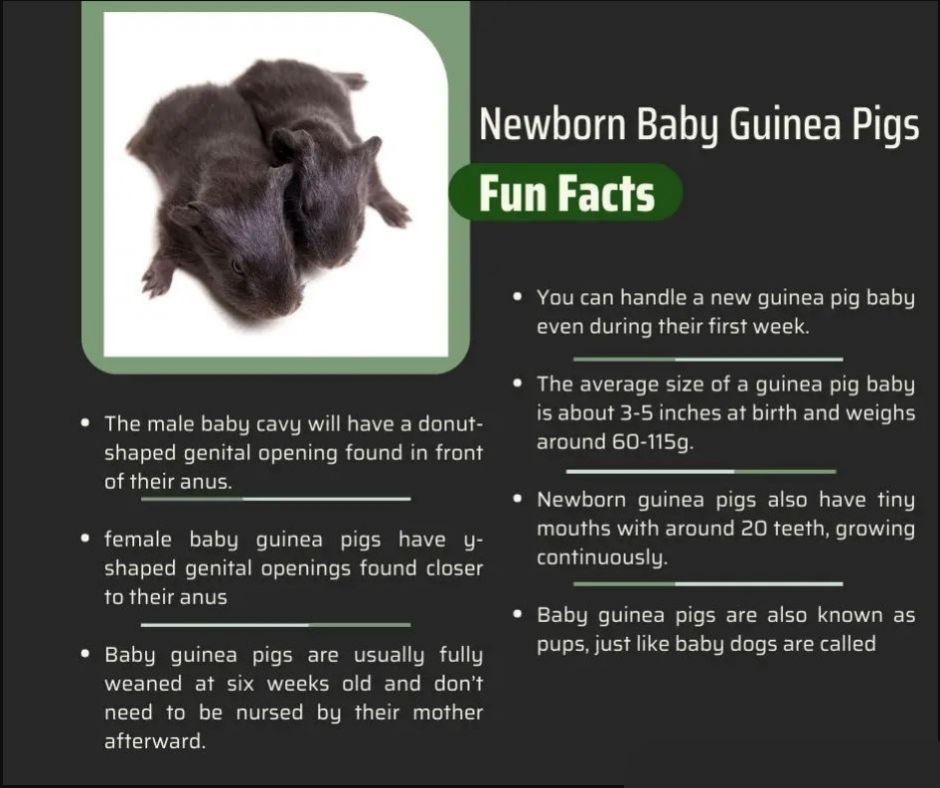
Can You Touch a Newborn Guinea Pig?
Yes, you can handle a new guinea pig baby even during their first week as long as you don’t interfere with the birthing process. However, you will need to handle them with utmost care because they are very tiny.
You need to avoid handling them for too long as this can affect their bond with their mother. It is best to allow baby guinea pigs to spend time with their mother to nurse and give them warmth.
Another thing is that a mother guinea pig can reject a baby guinea pig if you don’t allow the baby to bond with her.
What Does a Baby Guinea Pig Look Like?
The average size of a guinea pig baby is about 3-5 inches at birth and weighs around 60-115g.
Generally, the size of a guinea pig baby is directly related to the litter size. If there are more babies in a litter, the smaller each baby will be.
Newborns usually have big paws and heads when compared to their bodies. Furthermore, their body is covered with fur even at birth. Newborn guinea pigs also have tiny mouths with around 20 teeth, growing continuously.
After birth, newborn guinea pigs will start to move once they have been licked clean by their mom.
What Are Baby Guinea Pigs Called
Baby guinea pigs are also known as pups, just like baby dogs are called. However, male guinea pigs will be called boars once they grow up, while the females will be called sows.
Many call guinea pigs juniors once they reach sexual maturity but have not reached their full adult weight.
How Do You Know Gender Baby Guinea Pigs?
It is best that you know how to know gender baby guinea pigs to help ensure they don’t mate with each other. This is because allowing siblings to breed can lead to congenital disorders in their offspring.
It can be quite hard to definite sex baby guinea pigs on your own without knowing. Many owners recommend that you seek the help of a vet or an experienced mentor to sex them.
The best way to define the gender of your guinea pig is by holding them gently on their back. Guinea pigs like being held in this position for long, and you should be prepared to do this very quickly.
The male baby cavy will have a donut-shaped genital opening found in front of their anus. You will feel the shaft of their penis under the skin by carefully running your finger over the area. The penis can also appear if you push the area gently.
On the other hand, female baby guinea pigs have y-shaped genital openings found closer to their anus. Unlike the male, you will not feel a penis when you run a finger over the area.
As stated above, allowing siblings to breed can cause congenital disorders in their offspring. This means you will need to separate female and male baby guinea pigs from each other after their mother fully weans them.
This will help to ensure both siblings do not breed with each other.
How Long Do Baby Guinea Pigs Stay With Their Mothers?
Baby guinea pigs are usually fully weaned at six weeks old and don’t need to be nursed by their mother afterward. They should be ready to leave the nest after six weeks as they have learned to be independent of their mother.
You can separate baby guinea pigs from their mother during this period. This is also the age when most breeders will make a guinea pig available for sale.
How To Care For Baby Guinea Pigs
It is important that you provide adequate care for your baby guinea pigs to ensure they grow well and live healthily. You will need to put them in a roomy cage and ensure the cage is placed in a quiet area. This is because guinea pigs are sensitive to noise.
Furthermore, you need to place their cage away from direct sunlight and from a vent blowing air into the cage. Another thing is that you need to weigh your pup regularly to make sure they are gaining steady weight.
Although mother guinea pigs will nurse their pups, you will also need to provide food for them. You can start offering them shredded lettuce but ensure you remove the leftovers as they can spoil quickly.
After the third day, you can introduce fresh hay, pellets, and green vegetables to them. There should also be a constant supply of fresh water for the pups.
Baby Guinea Pigs and Their Mother

Mother guinea pigs will start to nurse their baby guinea pigs immediately. The pups will even begin to eat solid foods after three days once the mom shows them. They will need to be with their mother for at least three weeks.
During this period, the mother guinea pig will teach and help their pups a lot of things. She will help stimulate the pup to urinate and defecate while periodically cleaning their bottoms.
The mother will also produce softer stool that the babies can consume to have proper bacteria in their digestive systems.
After 3-4 weeks, it is important that you separate the male pups from the sisters and mother. This is to prevent accidental pregnancies as they reach sexual maturity in this period.
You can also separate the female from the mother after four weeks.
However, a female guinea pig baby and its mother can stay together in the same cage. The mother will stop nursing her after four weeks, and she can fend for herself afterward.
Baby guinea pigs will then live an independent life around six weeks old. You can then rehome them after eight weeks as they will be fully weaned and will be eating solid foods.
It is recommended that a vet should examine pups before you send them to a new home.
Baby Guinea Pigs Have Been Neglected from Their Mother
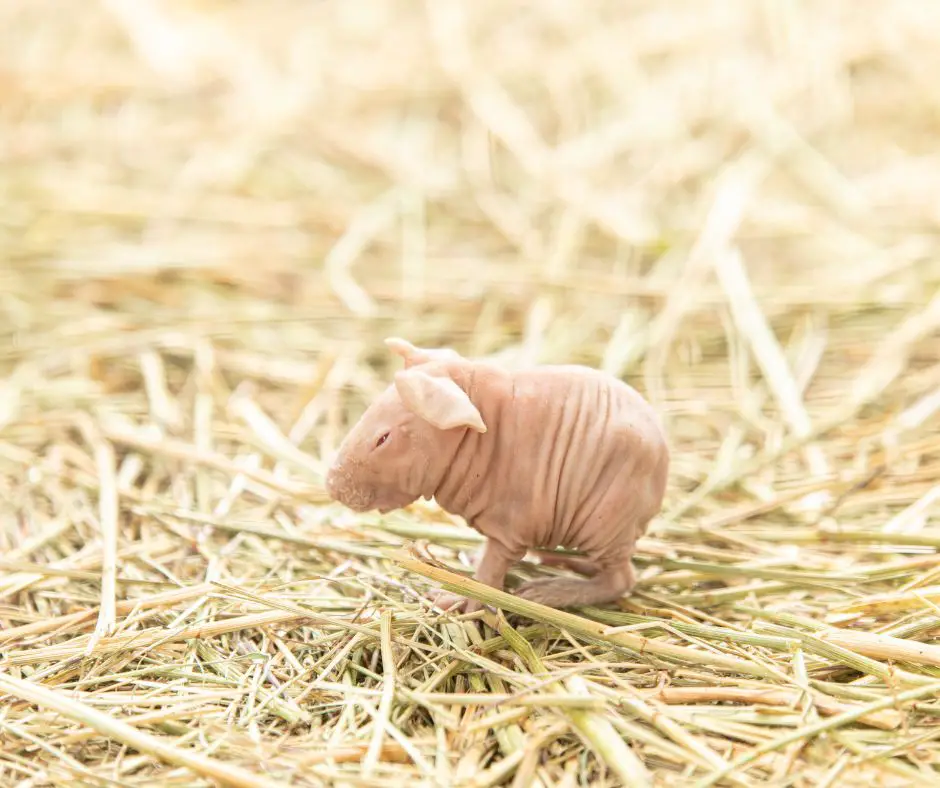
There are situations when mother guinea pigs can neglect their pups. Mother guinea pig usually ignores her pup if it is born prematurely and it is not healthy. A neglected pup can die if you do not intervene immediately.
Signs That A Baby Guinea Pig Is Neglected
The best way to determine that a baby guinea pig is neglected is to be on the lookout for these signs.
- Your pup is lethargic
- The baby guinea pig has a shrunken belly.
- Baby guinea pig is cold.
You can also weigh the baby guinea pig daily to help determine if they are gaining weight appropriately.
Assisted Feeding
Once you have determined that a baby guinea pig is neglected, the best thing is to hand-raise the guinea pig.
Baby guinea pigs need food for survival, and you can help a neglected pup through assisted feeding. The first thing to do is to first try out natural feeding before starting syringe or bottle-feeding them.
You can do natural feeding if the mother guinea pig is not too stressed and can tolerate it. Here are the steps that you can follow:
- Hold the mother guinea pig firmly in your arms and put each baby onto her nipples to suckle.
- Allow a small amount of milk to come out from the nipple to help entice the baby to suckle.
However, if this does not work, you will need to do assisted feeding.
A popular feeding formula that you can use to feed your baby guinea pig is the Wombaroo Guinea Pig Milk.
This product is rich in vitamin c, and you can mix it with warm water to make milk for the babies. Apart from feeding formula, you will also need small plastic syringes to feed the milk to the babies.
Four Paws Healthy Promise Dog & Cat Supplements & Remedies
You can also use small plastic feeding bottles and the smallest plastic teat. It is also recommended that you use a small scale to weigh the pup regularly, and this is because the amount of milk that you can feed your pup will depend on the baby’s weight.
Here are steps to follow to hand feed your baby guinea pigs.
- Ensure you wash the syringes and bottles thoroughly before you use them.
- Ensure you feed the baby guinea pig in a safe environment as they can die if they drop from one or two feet.
- Make the baby guinea pig sit safely on the floor or on a table with one hand.
- Use the second hand to hold the bottle or syringe.
- Feed the baby guinea pig with the bottle slightly vertically in front of them.
- A baby guinea pig may first resist feeding, and you need to avoid force-feeding them.
- You can wet the baby’s lips with a drop of the warm formula to entice it.
- After it licks it, you can then repeat the procedure gently.
- Don’t force or squeeze too much formula into the pup’s mouth.
- You don’t need to add any pressure if the baby guinea pig grabs the teat and begins suckling. You may accidentally aspirate your baby guinea pig if you use extra force when a baby guinea pig is already suckling the bottle.
Note: hand-feeding your baby guinea pig can be quite hard if they cannot suckle. You can reduce the risk of aspiration by holding the syringe tip or teat sideways.
Tips To Care Neglected Baby Guinea Pig
Generally, newborn guinea pigs cannot defecate or urinate on their own. Their mother normally uses their tongue in their bellies and genital region to help them urinate and pass out feces. You can help a neglected baby guinea pig by mimicking this behavior.
Use a cotton ball moistened with warm water to rub the pup’s belly and genital area gently. You should continue doing this until their abdominal muscles tense and release urine. This process usually takes 15-20 seconds of stimulation.
Do Guinea Pigs Eat Their Babies?
Although this can look startling, a mother guinea pig can eat their newborn pups. Some reasons why a mother guinea pig can eat their babies are stated below.
Inexperience
An inexperienced mother may mistakenly kill her young with her teeth when cleaning them up after birth. This is common when the pup is stillborn or is ill and cannot survive.
The mother may try to clean her pup more vigorously until she damages her pup if they are not responding to her attention.
Malnourishment
A mother guinea pig may also resort to eating her pup if severely malnourished. A mother can look healthy but may be malnourished. A mother is malnourished if her diet does not contain enough vital nutrients and vitamins.
Also read: 5 Causes Make Mother Guinea Pig Attacking Babies and Dealing Tips
Baby Guinea Pig from Pet Store
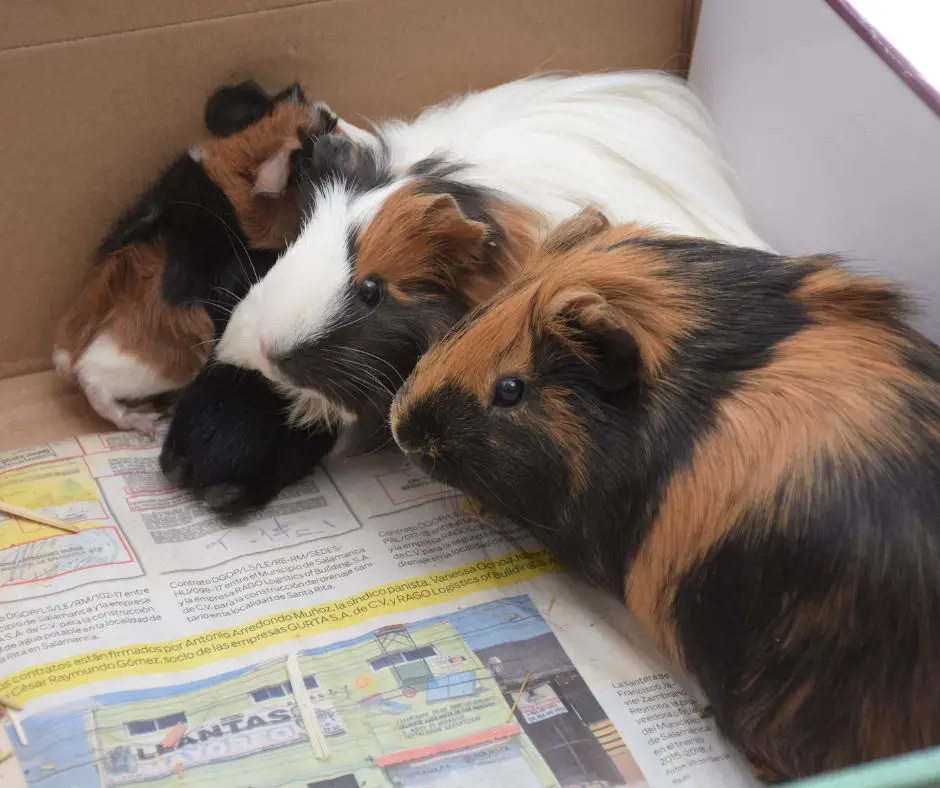
Most baby guinea pigs bought from pet stores are at least five weeks old. This means they would have already become independent and weaned from their mother.
Before you bring a baby guinea pig home, you will need to first set up a guinea pig cage where you will house them.
The tank should be escape-proof and have enough space to exercise and play. You can then fill the cage with beddings to make it comfortable for your guinea pigs.
Accessories like tunnels, plants, and toys can also be added to the cage to keep them entertained. You can then place the guinea pigs in the cage and give them some weeks to acclimatize to their new environment before handling it.
During the acclimatization period, you should provide a well-balanced guinea pig diet like timothy hay, vegetables, pellets, and water to them.
Guinea pigs are usually timid when you first bring them to a new home, and you should pay close attention to them to help detect any health issues quickly.
However, you should allow them to roam around their cage to get used to it.
What Do Baby Guinea Pigs Eat?
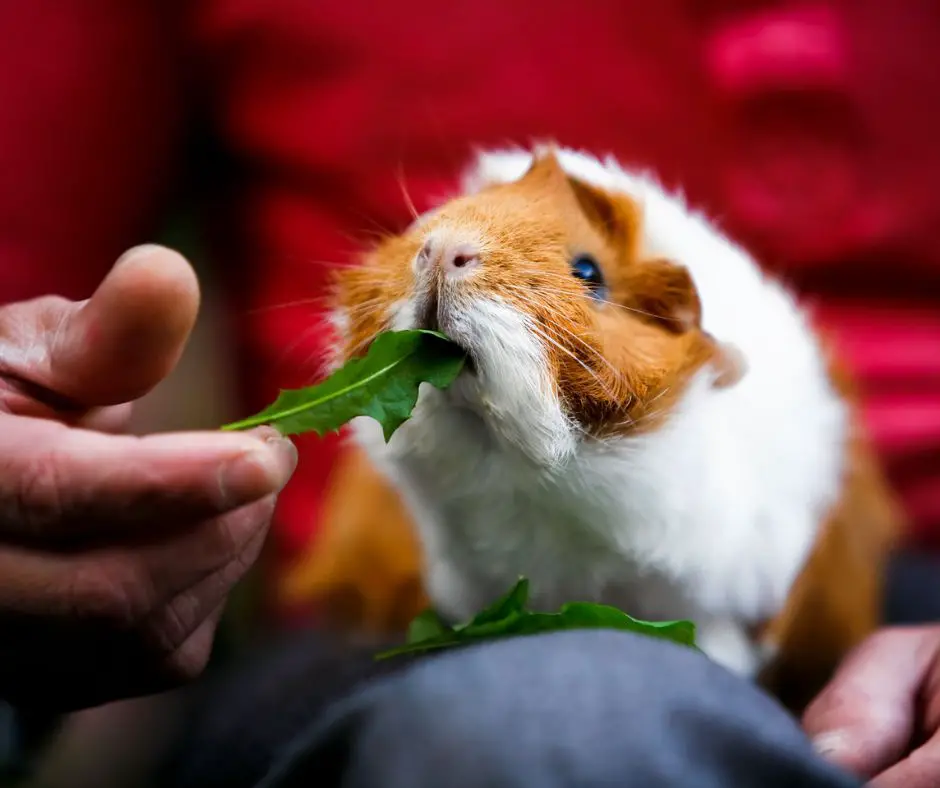
Generally, baby guinea pigs eat almost the same thing as an adult, which means you don’t have to worry about formulating or looking for a specialized baby diet.
The only difference is that baby guinea pigs require additional calcium in the diet during the first few weeks after birth.
Furthermore, you will need to provide a pellet for both the baby and the mother guinea pig throughout the day. You can opt for alfalfa hay as they are rich in calcium or alfalfa-based pellets.
Other foods that you can feed your pups are fresh fruits and vegetables as they are rich in Vit. C and very nutritious.
Oxbow Animal Health Garden Select Young Guinea Pig Food
Baby Guinea Pig Feeding
Calcium is one of the important nutrients that baby guinea pigs require in their diets, especially during the first few weeks. They need the extra calcium to grow strong and durable bones.
It is recommended that you feed them with alfalfa hay and alfalfa pellets as they have high calcium content.
You can then use timothy hay and pellets as the major part of their diet. It is also best to add vegetables and fresh fruits to their diet as they contain vitamin C.
You will need to feed baby guinea pigs twice a day and ensure that you do this at a time you will be available. This is because baby guinea pigs love to eat their food on a schedule.
By feeding them at a certain time, your pup will be expecting that you feed them at that time every day.
You can easily stress your baby guinea pig if the time you feed them fluctuates too much.
How Often Do Baby Guinea Pigs Eat?
Baby guinea pigs don’t overeat as long as you provide them with a proper diet of hay, fresh vegetables, and pellets. You will need to feed them twice per day but in small quantities.
How to Handle Baby Guinea Pigs
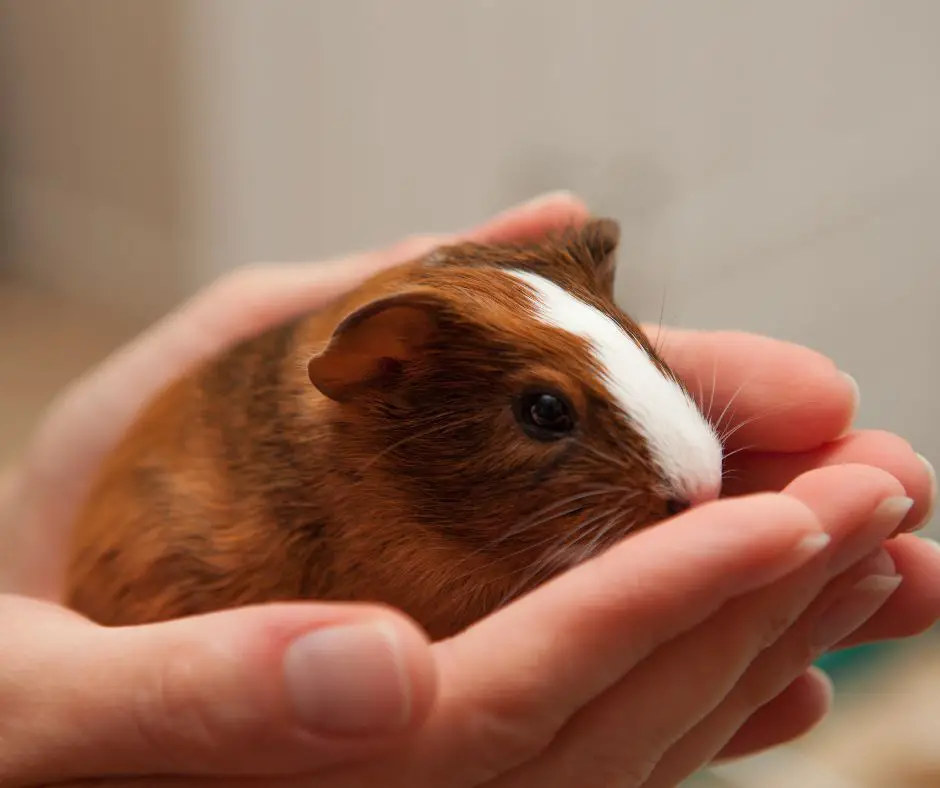
It is best to handle baby guinea pigs as early as possible (like after a week) to help ensure they are comfortable with human interaction. This will help to make your guinea pigs better socialized and a better pet.
- However, you should not try to separate the pup from the mother. Here are some steps to follow if you want to handle a baby guinea pig.
- Wash your hands before you try to pick up a baby guinea pig.
- Baby guinea pigs can be skittish at first, and you should give it time to get used to you.
- Hold baby guinea pigs like you normally hold older piggies. You can use one hand to support your guinea pig’s feet and fit them in your palm.
- Use your second hand to support their bottoms to make them safe.
Note: handling of a pup will not make their mother reject them. Once a baby guinea pig is ready to be handled, you can try to handle them for some time every day to help them get used to human interaction.
How To Bathe A Baby Guinea Pig?
Generally, most guinea pigs don’t like water and can be frightened by water. It is recommended that you wait until your baby guinea pig is at least eight weeks old before you bathe them.
Things You Need For Bathing Your Baby Guinea Pig
Bathing Your Guinea Pig
- Place the washcloth at the bottom of the bucket that you want to use to bathe your guinea pig. This will help to ensure your guinea pig does not slip and slide.
- Pour warm water on your pup’s back gently.
- Wet all of your pet thoroughly except for its face.
- Use a little shampoo to wash your guinea pig’s fur
- Rinse your guinea pig well.
- Wrap your guinea pig in a towel until your guinea pig stops shivering.
- Brush your guinea pig’s fur to help prevent tangles while drying their fur.
- Dry your guinea pig with a blow dryer at the coolest temperature and lowest speed.
- Continue to brush the fur.
Johnson’s Head-to-Toe Gentle Tear-Free Baby & Newborn Wash
How To Train Baby Guinea Pigs
The best thing about keeping guinea pigs is that they are very intelligent, and you can easily teach them to respond to simple commands and lots more.
If your guinea pig is super tame, it will display a dog-like personality, and you can even teach it to follow you around.
Here are some requirements that you can provide to make training your guinea pigs successful:
- A secure cage located in a quiet and clean environment.
- The bedding in their cage is comfortable for your cavies.
- Your undivided attention
- Some treats.
You can start training a baby guinea pig once it is tamed and used to you.
Some of the trainings that you can give to your baby guinea pigs are:
- Train your pups to respond to their names
- Train your guinea pig to stand up
- Train your guinea pig to play ball
- Train your guinea pig not to bite
- Train your guinea pigs to go round in circles
- Train your pups to follow you, etc.
Check out:
Monitor Baby Guinea Pigs Health
Guinea pigs can be affected by several types of diseases like footpad infections, heat stress, pneumonia, and so on. Your guinea pig pups can also develop scurvy if they have a vitamin C deficiency.
It is important that you monitor your baby guinea pig’s health to help avoid any health problems.
Here are some signs of a healthy guinea pig
- Eats and drinks regularly
- It is walking normally
- It has healthy fur and skin
- There is no discharge from their eyes, nose, and mouth
- Active and alert
- Does not have labored breathing
Some signs that your guinea pig is sick are
- Experiencing weight loss
- Lack of fecal pellets
- Lethargy
- Skin lesions
- Lack of fecal pellets
- Lack of appetite
- Swollen and painful joints.
- Labored breathing.
Once your pups start showing any of these signs, you can take them to the vet for diagnosis and treatment.
Finally: Don’t Forget to Choose a Name for Baby Guinea Pig
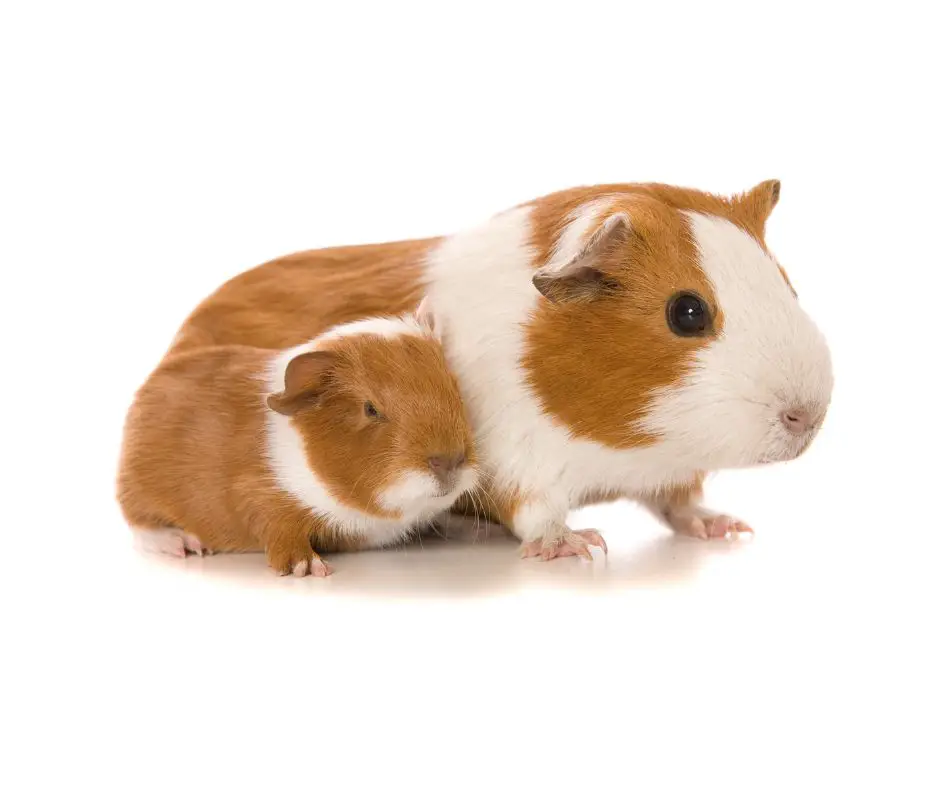
One of the fun things about housing a guinea pig is an aspect where you name them. There are several ways to choose a name for your baby guinea pig. You can use a unique characteristic of your guinea pigs to name them.
Cute Boy Names
- Rocky
- Tiberius
- Thumper
- Ace
- Twitch
- Lucky
Cute Girl Names
- Sweetie
- Annie
- Ginger
- Rosie
- Petal
- Cookie
There are also various fun ways that you can use as inspiration online.
Check out: 400+ Guinea Pig Names: Male, Female, Unique and Funny
How Much Do Baby Guinea Pigs Sell For?
The best age to get a guinea pig is between 2-3 months. During this period, the guinea pig would have spent time with their mothers, and there is still enough time for the pet owners to watch as it grows.
Baby guinea pigs can cost you about $10-$40 at a pet store and will cost about $10-$50 from reputable breeders. However, some guinea pig breeds can be more expensive.
Can You Put a Baby Guinea Pig in with an Older One?
Yes, you can house a baby guinea pig with an older one. This is because most older guinea pigs will not see the younger ones as a threat, and they can get on with each other very well.
However, you need to ensure they have similar personalities and keep an eye on them for some time to make sure they get well with each other.
Last Sentences
Unlike many pets, baby guinea pigs are unusually mature, even newborns.
Whether you are raising a guinea pig pup from birth or you are buying an older baby guinea pig, you will need to prepare in advance to ensure they get the best start in life.
We hope this article provides everything you need to know about baby guinea pigs.
